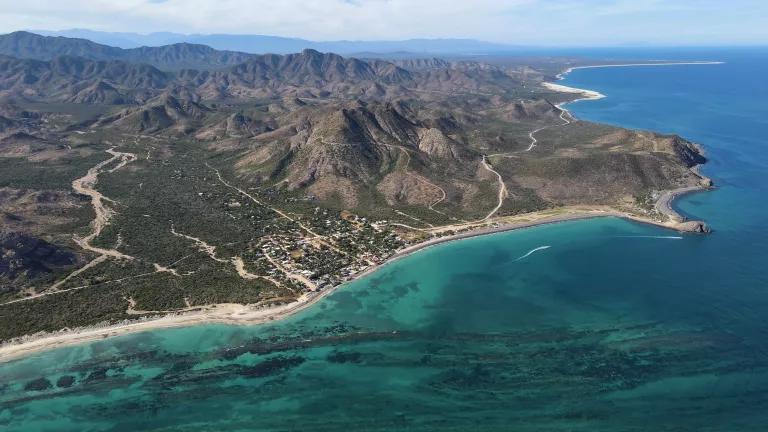
For the first time ever, UNESCO and Ramsar are sending a joint mission to Mexico that will investigate potential threats to Baja California’s Cabo Pulmo – a remarkable coral reef ecosystem and National Marine Park that is both a UNESCO World Heritage Site and a Ramsar Wetlands Site. During the four-day visit next week, the mission will be speaking with government officials, civil society groups, academics and scientists, local communities, and proponents of the tourism projects that threaten this incredible park. With such a full agenda, the UNESCO and Ramsar representatives will hopefully leave Baja with a complete perspective of the park’s importance and health as well as of the immense damage that the proposed tourism projects – such as the massive and controversial Cabo Cortés resort - would incur if allowed to be built.
According to the scientific team behind an August 2011 study from the Scripps Institute of Oceanography at UC San Diego, Cabo Pulmo is “the most robust marine reserve in the world.” Their data showed that the park’s biomass increased 463 percent from 1999 – 2009. That’s an incredible amount. In contrast, indicators at the other 59 sites studied during the same period either stayed constant or decreased. This is all the more impressive when you consider that Cabo Pulmo’s marine life was nearly decimated in the 1970s-80s due to irresponsible fishing. Realizing what was at stake, the local community organized to protect the area. They successfully petitioned the government to grant it national protection and decided of their own accord to make almost the entire 7,111 hectare (17,571 acre) park a no-take zone – meaning no fishing is allowed inside the park’s borders, period. Today, Cabo Pulmo National Marine Park is a local, national and international conservation success story that the Mexican government and people should be proud of and that others should seek to emulate.
A new threat to the park is now lurking, however, in the shape of a massive proposed tourism and real estate complex called Cabo Cortés, which would rival Cancun or the nearby Los Cabos in its size and scope. Planned by the financially-troubled Spanish developer Hansa Urbana, Cabo Cortés would consist of lots for 15 hotels, the equivalent of approximately 30,000 hotel rooms, a 490-slip marina, at least two 27-hole golf courses, a private jet port, desalination and water treatment plants, two million square feet of commercial and office space, and other infrastructure – all on the property just 11 kilometers (6.8 miles) north of Cabo Pulmo.
You don’t have to be a scientist to see that Cabo Cortés could devastate the now-thriving marine life in Cabo Pulmo. But scientists are among the many people who do understand the irreversible damage that Cabo Cortés would cause. In fact, 22 of the world’s top marine biologists and scientists sent a letter to the UNESCO World Heritage Center’s Director, urging an investigative mission to visit Cabo Pulmo. A coalition of national and international organizations echoed their call to UNESCO, and also reached out to Ramsar for the same purpose.
Fortunately, UNESCO and Ramsar listened. Next week’s joint UNESCO / Ramsar mission will be an exciting time for the wide variety of people who want to protect Cabo Pulmo, and an opportunity for the Mexican government to show off its own huge success story. This is what the mission can expect:
- from scientists and academics - data about the health and importance of the reef as well as about the variety of ways in which Cabo Cortés would damage Cabo Pulmo’s sensitive marine life
- from communities - reasons why Cabo Cortés will not bring the kind of jobs or growth that they want for their region
- from civil society organizations – the myriad legal, environmental, and social arguments against Cabo Cortés
I imagine that when they meet with the mission the project’s proponents will try to downplay these risks and concerns. Hopefully, the UNESCO and Ramsar participants will see right through those attempts and recommend to the Mexican government that it stand firm in its commitment to protect this incredible reef and not move forward with risky projects – such as Cabo Cortés – that could irrevocably damage this locally and internationally important natural treasure.



